While the Eastern Seaboard has been pounded and buried by winter storm after winter storm this year, here in West, things have been pretty mild, at least in the lower-elevation areas where, even in the worst years, die-hards rarely put their fly gear “away for the season.”
Since we’ve avoided most of the Arctic blasts that have blown through the Northeast -- each one carrying the “storm of the century” warning and a kitschy Weather Channel name (Winter Storm Thor? Really?) -- fishing this year has never really stopped. Yes, it’s still winter--a drive over Teton Pass will convince anyone of that--but it’s almost spring, and, should the mild weather continue, we’ll be in the throes of a Westerner’s least-favorite time of the year -- mud season -- before you know it.
But, between now and when the high-country snow really starts to melt and wash down every gully and gulch, some of the best trout fishing in the West takes place. It’s that sweet spot before runoff and after the worst of the season’s cold abates. It’s all about blue-bird days with snow-lined riverbanks. Icy mountain guardians watching over greening valley meadows. Days that start in fleece and end in a t-shirt.
Pre-runoff fishing, frankly, might be the best time of the year to catch sizeable trout in low, clear water conditions. And there hatches to consider, even with nighttime temperatures that will dip into the single digits with regularity. You’ve likely all heard about the famed, yet elusive sqwala hatch on Montana’s Bitterroot River and Rock Creek, but March browns are just as prevalent on those waters and can be best imitated with a fat Adams pattern. And you’ve probably heard about the Blue-winged olives that emerge on cloudy spring days, just like they did on cloudy fall days all throughout the Rockies.
You’ve also likely heard the term, “Mother’s Day caddis hatch” when folks talk about Colorado’s Arkansas River--it can be truly epic if the hatch takes place before the Fourteeners watching over the river shed their winter snow and send it washing down Browns Canyon to the delight of every whitewater junky in the West.

But the most dependable and predictable pre-runoff hatches are the hatches that have taken place all winter, even among the ice and snow. Midges. Ranging from flies no bigger than a pepper flake to fat Henry’s Fork size 16 critters, midge patterns and their small nymphy relatives ought to occupy every fly box in the West this time of year. Think Griffith’s gnats and Zebra midges. Tiny Copper Johns tied in gold, green and red. Bead-head nymphs that get down, but not too far down.
More Like This
And while the Arkansas, the Bitterroot and Rock Creek have much-deserved springtime reputations, most Western rivers offer surprisingly good angling between the first of March and mid-May, when runoff generally kicks in full bore. Famous tailwaters like the Roaring Fork, the South Fork or even the ice-lined Taylor have great spring fishing. The Snake River just outside Jackson fishes really well this time of year, and there’s almost no pressure thanks to the snow on the slopes above Snow King, Targhee and Teton Village--skiing is still in full bore, and nobody in their right mind would fish when fresh powder from spring storms still lines the mountains, right?
The Snake, too, is a native cutthroat trout fishery, meaning this is the time of year for anglers who are willing to bundle up a bit to catch truly big Snake River fine-spotted cutthroats that migrate up out of Palisades Reservoir, through the Snake River Canyon and up into the river’s braids and channels in Grand Teton National Park. This is the time of year when the ospreys start to come home--and you know they wouldn’t make the trip if the fishing was suspect.
Pods of whitefish are plentiful, too, on many Western rivers, and while some anglers turn their noses up at these native fish, they’ve saved many a day for me on chilly spring Henry’s Fork and South Fork days. Whitefish are more active in winter than trout are, and they can be pretty beefy after gorging themselves on midges and baetis all winter long. Whities up to 20 inches are pretty common this time of year, and they’ll fight every bit as hard as native cutthroats.
Tackle is pretty straight-forward, too, when it comes to spring fishing. In most cases, anglers can get by with a simple 9-foot, 5-weight outfit with floating line and tapered leaders to 4x tippet. You might want a 6-weight if want to swing streamers--not a bad idea on rivers like the Henry’s Fork when the rainbows are spawning the browns are waiting in the wings for stray eggs to wash away from the gravel (think Egg-sucking leech patterns--they aren’t just for steelhead and salmon, you know).
For nymphing this time of year, don’t be afraid to try something new -- long, supple Tenkara rods are ideal for high-sticking weighted nymphs through likely runs, and you’d be surprised how they can handle larger trout. In fact, if I had to pick my favorite nymphing rod, it would be a 13-foot Iwana -- an old stand-by Tenkara USA rod that telescopes into a two-foot-long tube and all but disappears into a backpack.
But, tackle and flies aside, the most important thing an angler must muster this time of year is the simple will to be on the water. Yes, you might have to post-hole your way through thigh-deep snow to reach the water. Yeah, you’ll regret selling those Neoprenes at the last garage sale, but a pair of fleece snowmobile pants under your breathables will help keep the chill away.
Chances are, if you can gather the desire to fish, you’ll be gloriously alone on one of the West’s iconic rivers, casting to fat trout that, like you, are waking from a long winter’s slumber and ready to eat.




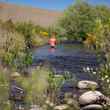


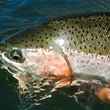



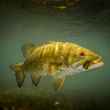



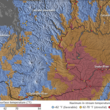
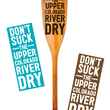





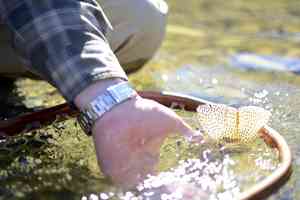
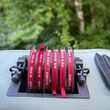


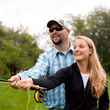

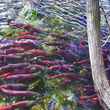

Comments